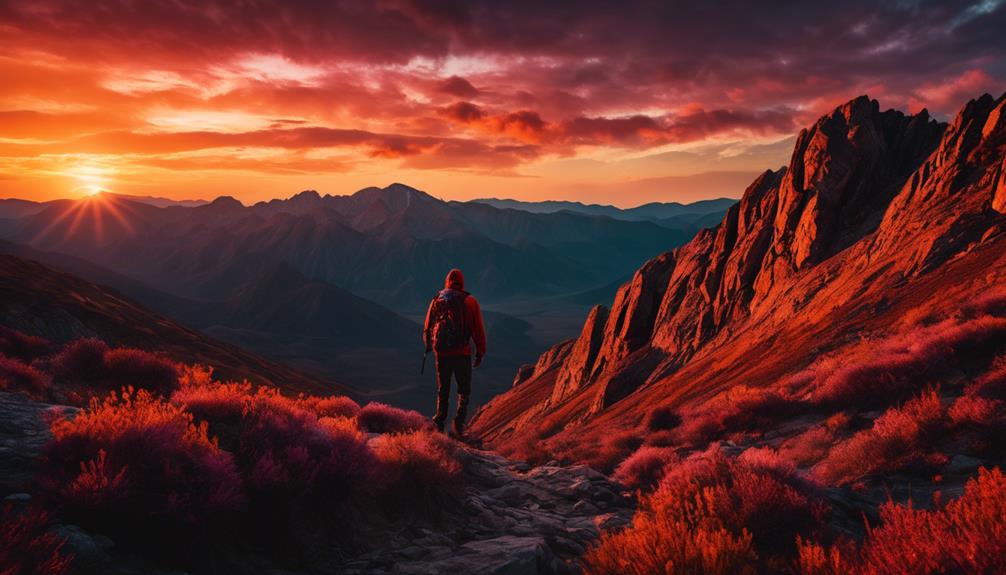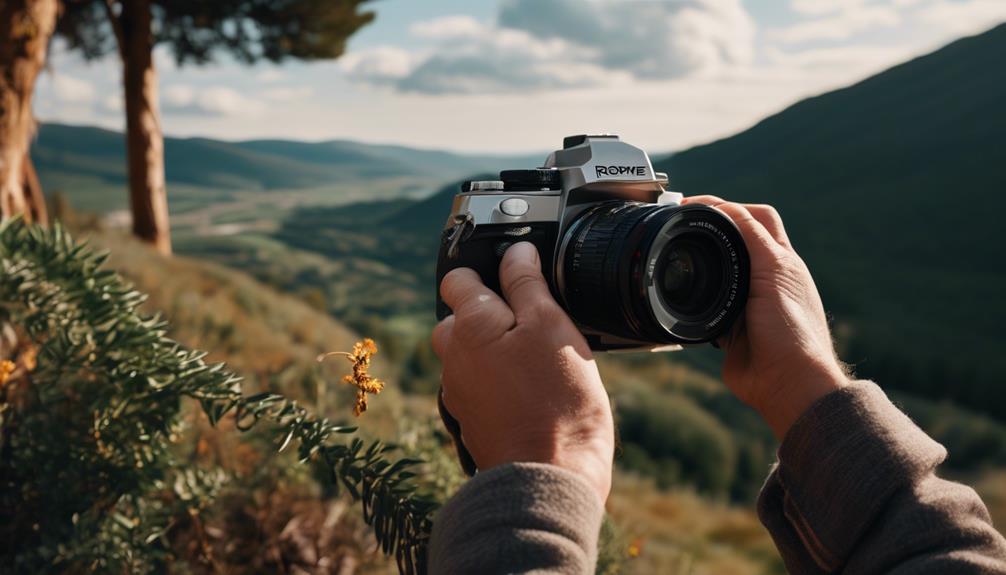Please note this post may contain affiliate links picked by me (Jay) that I have deemed may be of interest or relevant to you the reader of this.
These links do not affect the cost of the thing if you decide to purchase but i may get a little money if you choose to purchase.
For more information on my affiliate link policy click here.
As a photographer, I've come to realize that composition and framing are the secret ingredients that transform a mere snapshot into a captivating work of art.
Like a skilled chef carefully arranging ingredients on a plate, the way we compose and frame our photographs can make all the difference in how they are perceived and appreciated.
But what exactly makes composition and framing so crucial in photography? Well, let me tell you, it's not just about capturing a pretty picture; it's about capturing the essence of a moment, evoking emotions, and telling a story that leaves the viewer yearning for more.
Key Takeaways
- Composition and framing enhance the overall impact of a photo.
- Understanding negative space and balance is crucial for visually stunning images.
- The rule of thirds creates dynamic and interesting compositions.
- Lines and shapes transform ordinary photographs into captivating works of art.
The Basics of Composition and Framing
What are the key elements that make up the basics of composition and framing in photography?
When it comes to creating visually stunning images, understanding the importance of negative space and balancing elements in a composition is crucial.
Negative space refers to the empty areas surrounding the main subject in a photograph. It may seem counterintuitive, but negative space plays a vital role in enhancing the overall impact of a photo. By leaving empty spaces, we allow the viewer's attention to be drawn directly to the subject, creating a sense of focus and simplicity.
On the other hand, balancing elements in a composition involves arranging various elements within the frame in a way that creates visual harmony. Every element in a photograph should have a purpose and contribute to the overall story or message.
Achieving balance can be done by considering factors such as color, size, texture, and position. It's all about finding the right equilibrium between these elements to create a visually pleasing image.
Understanding the Rule of Thirds
As a photographer, one of the fundamental concepts to grasp in order to elevate your compositions is understanding the rule of thirds. This rule is a guideline for composing visually appealing and balanced photographs. It involves dividing the image into a 3×3 grid by placing two equally spaced horizontal lines and two equally spaced vertical lines. The key elements of your photo should then be placed along these lines or at their intersections, known as the "power points".
By using the rule of thirds, you can create more dynamic and interesting compositions. Let's take a look at a table below to see how this rule can be applied:
| Element | Placement |
|---|---|
| Subject | Intersection of two lines |
| Horizon | Along one of the horizontal lines |
| Leading lines | Along one of the vertical lines |
| Natural lighting | Adjusting exposure based on the grid |
The rule of thirds can also be used to guide the placement of leading lines, which are lines within the image that draw the viewer's eye towards the main subject. By aligning these lines with the grid, you can create a sense of depth and movement in your photos. Additionally, understanding how natural lighting interacts with the grid can help you achieve the desired mood and atmosphere in your images.
Incorporating the rule of thirds into your photography not only enhances the visual appeal of your compositions but also allows you to experiment with different perspectives and create more engaging images. So, next time you're out capturing moments, remember to embrace the power of the rule of thirds and let your creativity soar.
Using Lines and Shapes to Enhance Composition
Lines and shapes play a crucial role in enhancing the composition of a photograph, adding depth, structure, and visual interest to the image. By using leading lines, you can guide the viewer's eye through the photograph and create a sense of movement. These lines can be found in various forms, such as roads, fences, or even a row of trees. They create a pathway for the viewer to follow, leading them towards the main subject or focal point of the photograph.
Geometric shapes are another powerful tool in composition. Triangles, squares, and circles can add structure and balance to your image. They can be found naturally in the environment or created using objects or people within the frame. These shapes can create a sense of order and stability, drawing the viewer's attention and creating a visual harmony within the photograph.
When used effectively, lines and shapes can transform an ordinary photograph into a captivating work of art. They provide a framework for the image, allowing the viewer to navigate through the scene and discover the story within.
Creating Depth and Perspective in Your Photos
To capture stunning photographs that draw viewers in and create a sense of depth and perspective, it is essential to master the art of creating depth and perspective in your photos. While composition and framing play a significant role in achieving this, there are other crucial elements to consider. Lighting, for instance, plays a vital role in creating depth and perspective. By strategically placing light sources and manipulating shadows, you can add dimension to your photos, making them more visually engaging.
Another technique to enhance depth and perspective is by utilizing color and contrast. By incorporating contrasting colors or using color gradients, you can create a sense of distance and depth in your photos. Additionally, by placing objects of different sizes or using leading lines, you can further emphasize perspective, drawing the viewers' attention into the photo's focal point.
To summarize the importance of lighting and color in creating depth and perspective, I have prepared a table below:
| Lighting | Color |
|---|---|
| Manipulate shadows and light sources | Utilize contrasting colors |
| Add dimension and depth | Create a sense of distance |
| Enhance the visual appeal | Emphasize perspective |
Mastering the art of creating depth and perspective in your photos is a skill that takes time and practice. However, by understanding the importance of lighting and color, you can elevate your photography to new heights, capturing images that captivate and immerse the viewers in a visually stimulating experience.
Emphasizing Subject Placement and Framing Techniques
Now that we've explored the importance of lighting and color in creating depth and perspective, let's turn our attention to the art of emphasizing subject placement and framing techniques in photography.
One crucial aspect of composition is the effective use of negative space. Negative space refers to the empty or unoccupied areas in a photograph. By strategically incorporating negative space, you can emphasize the main subject, allowing it to stand out and capture the viewer's attention. This technique adds a sense of balance and harmony to your composition.
Another technique that can greatly enhance your photographs is the use of symmetry in composition. Symmetry creates a sense of order and stability, drawing the viewer's eye to the subject. It can be achieved by placing the subject at the center of the frame or by using elements in the scene to create a balanced composition. Symmetry can add a touch of elegance and sophistication to your photos, creating visually pleasing and captivating images.
Frequently Asked Questions
How Can I Improve My Composition and Framing Skills as a Beginner Photographer?
As a beginner photographer, improving composition and framing skills is crucial.
To start, I focus on the importance of lighting in composition. Understanding how light interacts with a subject can create depth and add dimension to your photographs.
Additionally, using color contrast can enhance framing skills by drawing the viewer's attention to the main subject.
Experimenting with different angles, perspectives, and framing techniques will help you develop a unique and innovative style.
Are There Any Specific Techniques or Tips for Using Lines and Shapes to Enhance Composition in Photography?
Using lines and shapes to create dynamic compositions in photography is a game-changer. Imagine your photo as a puzzle, where each line and shape fits perfectly together to tell a story. By strategically placing leading lines, you can guide the viewer's eye to the focal point, creating a sense of depth and movement.
Geometric shapes can add structure and balance to your composition, making it visually appealing. So, embrace the power of lines and shapes, and watch your photos come alive.
How Can I Create a Sense of Depth and Perspective in My Photos?
When I'm taking photos, I always strive to create a sense of depth and perspective. One technique I find helpful is using leading lines.
By incorporating lines that guide the viewer's eye into the distance, it adds a three-dimensional quality to the image.
It's like inviting the viewer to step into the scene and explore its depths.
This technique really enhances the visual impact of the photo and makes it more engaging and immersive.
What Are Some Effective Subject Placement and Framing Techniques to Make My Photos More Impactful?
Subject placement and framing techniques are essential in making impactful photos. By carefully considering the positioning of the subject within the frame, we can create a sense of balance and visual interest.
The rule of thirds can be a valuable tool in achieving this, as it helps us to place the subject off-center and create a dynamic composition.
Additionally, lighting plays a crucial role in composition, as it can enhance the mood and atmosphere of the photograph, adding depth and dimension.
Can You Recommend Any Resources or Further Reading on Composition and Framing in Photography?
Sure!
When it comes to composition and framing in photography, it's all about creating that wow factor.
Lighting plays a crucial role in setting the mood and highlighting the subject, while color adds that extra pop to make your photos truly stand out.
If you're looking for resources or further reading on this topic, I recommend checking out some photography blogs, online tutorials, or even joining a photography community to get inspired and learn from fellow innovative photographers.
Happy shooting!
Conclusion
After diving into the world of composition and framing in photography, it becomes clear that these two elements are absolutely essential. They've the power to transform a simple snapshot into a captivating work of art.
By understanding the rule of thirds, using lines and shapes creatively, creating depth and perspective, and emphasizing subject placement and framing techniques, photographers can elevate their images to new heights.
So next time you pick up your camera, remember, composition and framing are the keys to unlocking the true potential of your photographs. Let your creativity soar and watch your images come to life.


